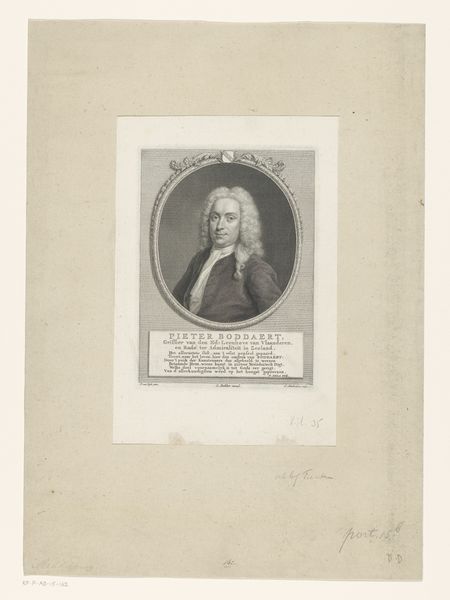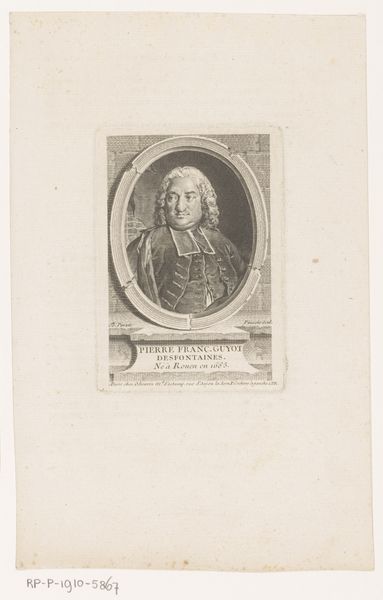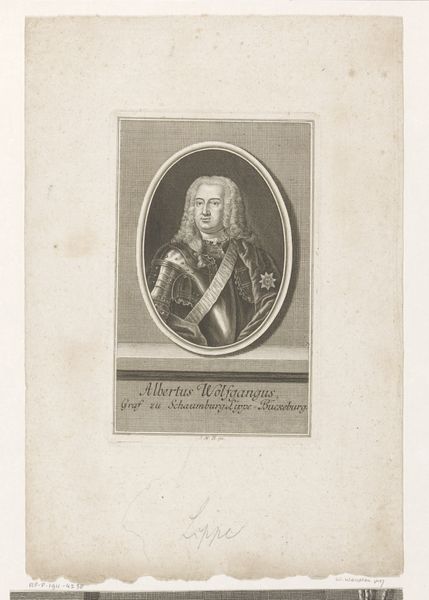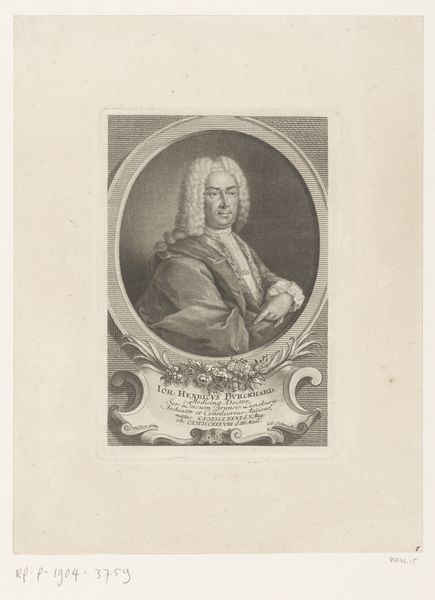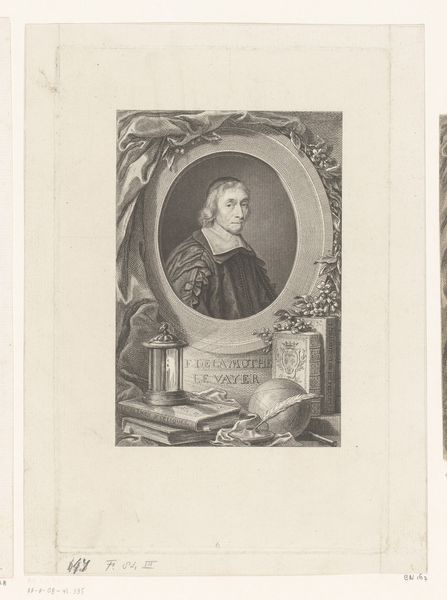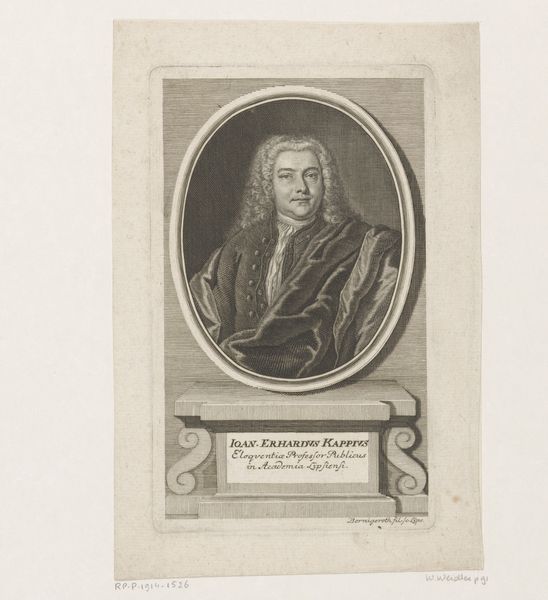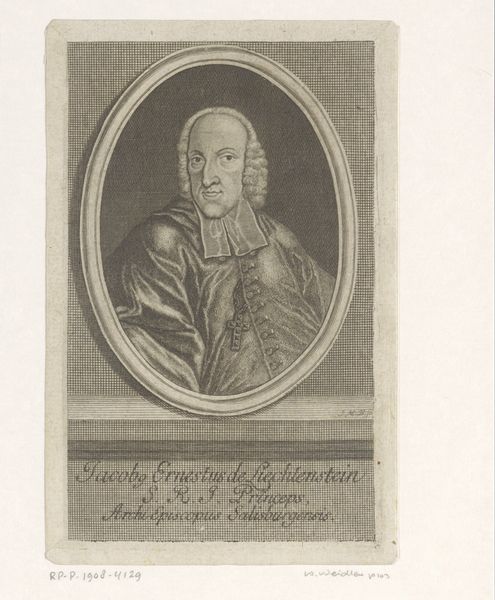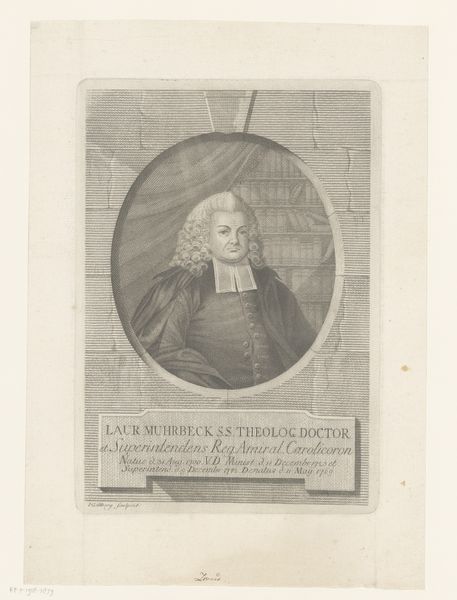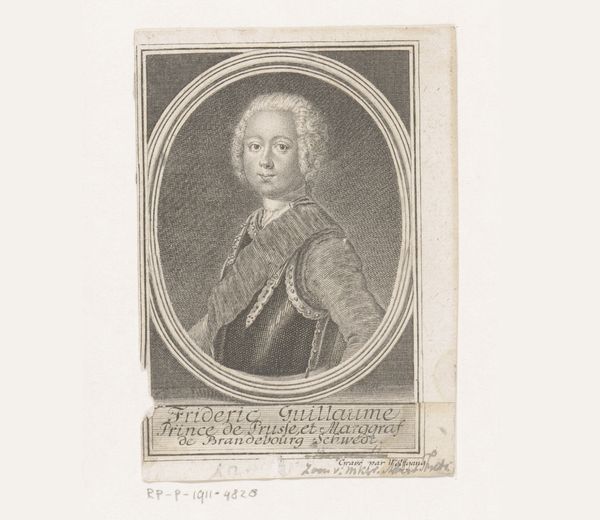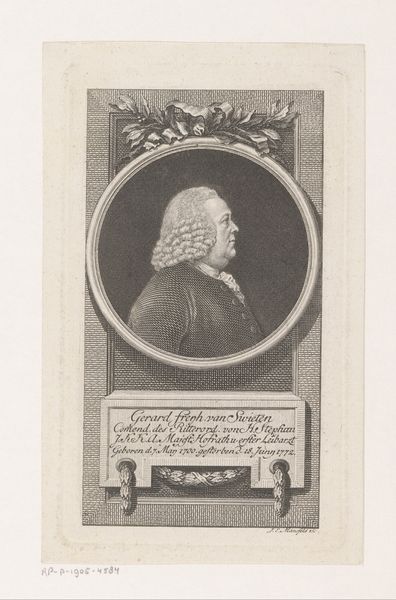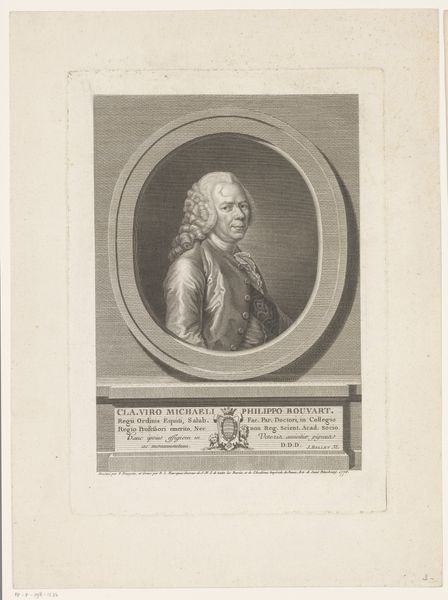
print, engraving
#
portrait
#
baroque
# print
#
history-painting
#
engraving
Dimensions: height 153 mm, width 93 mm
Copyright: Rijks Museum: Open Domain
Curator: This print, created by Johann Martin Bernigeroth sometime between 1723 and 1767, portrays Anton Dietrich Carl von Ingelheim. It's an engraving, a common technique of the Baroque period, held here at the Rijksmuseum. Editor: It strikes me as formal, austere even. The tight oval frame, the somewhat blank expression... It's definitely projecting a specific image of authority and status. But it is created as a print: I want to zoom in and think about labor. Curator: Absolutely. And consider what symbols he wears! Look at the elaborate robes, heavily adorned with decorative toggles, perhaps indicators of office or nobility. Even the wig itself speaks to a certain social positioning. The lack of vibrant color reinforces this seriousness. We must recall too how print-making served wider distributions of symbols: to power, status, etc. Editor: Right. The engraving technique, while allowing for detail, inherently flattens the texture. It minimizes the depth we'd expect from painted portraits of nobility. What material processes and techniques might reveal can get smoothed out by standardized printing protocols. The almost repetitive, uniform lines used for shading... how does that impact his depicted gravitas? Curator: I think you're pinpointing a tension between the desired symbolism and the medium's limitations. While color is absent, look at the shading around his face. I want to emphasize, in regard to these "limitations", this ensured copies and reiterations; his likeness could now extend far beyond his estate, reinforcing both the man and his inherited lineage. Editor: Yes, it’s interesting how the reproductive nature of print amplifies its symbolic power. Does the democratization inherent in the printmaking process then subtly subvert some of the singular authority the image aims to project? Think of how each printed iteration is both an original and a copy. Curator: A fascinating point! It invites us to question the supposed "authenticity" of power in that era and how printed image played a crucial part. Thank you! Editor: And thank you. I'll be looking at prints with new eyes.
Comments
No comments
Be the first to comment and join the conversation on the ultimate creative platform.
